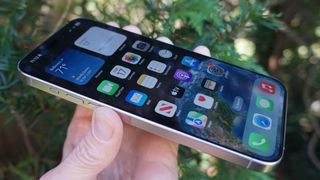Apple’s rumored iPhone 15 Pro overheating fix could come with a catch
Apple’s recently released iPhone 15 Pro devices have been widely praised for their speed, new features and industry-leading camera performance, but several users have also taken to the internet to report worrying overheating issues.
“Jeeez, my iPhone 15 Pro Max is almost too hot to touch while fast charging right now,” Ian Zelbo of 9to5Mac recently wrote in an X after. “I thought people were exaggerating, but no, this isn’t great.” Likewise, serial Apple leaker Revenge wrote: “This is insane. The iPhone 15 Pro can reach temperatures of up to 48 degrees. Applefire Dragon.”
Suffice to say, these overheating incidents don’t appear to be isolated, but it’s worth noting that we didn’t encounter any unnecessary temperature increases while testing Apple’s latest flagship for our iPhone 15 Pro Max review (our iPhone 15 Pro review is still ongoing). However, we did experience some overheating issues while testing Apple’s latest standard phone for our iPhone 15 review. So what’s going on?
According to veteran Apple analyst Ming-Chi Kuo, these incidents have nothing to do with Apple’s new A17 Pro chip, the first mobile processor built using a smaller 3nm process. “My research indicates that the iPhone 15 Pro series overheating issues have nothing to do with TSMC’s advanced 3nm node,” Kuo wrote in a blog post. This makes sense since the standard iPhone 15 uses a last-generation A16 Bionic chip.
Instead, Kuo notes that – specifically for the iPhone 15 Pro and the iPhone 15 Pro Max – “the primary cause is more likely the compromises made in the design of (the phone’s) thermal system to achieve lower weight such as the reduced heat dissipation area and the use of a titanium frame, which negatively impacts thermal efficiency.”
In layman’s terms, Apple may have traded efficient cooling credentials for an impressively lightweight design (curse you, titanium sides!) with the iPhone 15 Pro and iPhone 15 Pro Max.
Fortunately, Kuo expects the tech giant to roll out a fix for these overheating issues via software updates. But he also notes that such a move could come at the expense of power: “Improvements may be limited unless Apple reduces processor performance” (i.e. the clock speed of its A17 Pro chipset).
In that case, Apple’s new chip won’t quite deliver the same level of performance as promised at the launch of the iPhone 15. The differences are likely negligible for most iPhone 15 Pro owners. But it’s nevertheless significant that Apple ultimately has to limit its A17 Pro chipset to fix a problem of its own making.
Kuo doesn’t mention the standard iPhone 15’s overheating problem in his latest blog post, but complaints on that front appear to be fewer in number. Nevertheless, we’ll keep our ears to the ground for a fix for that phone, as we’ve personally experienced overheating on the standard iPhone 15.

